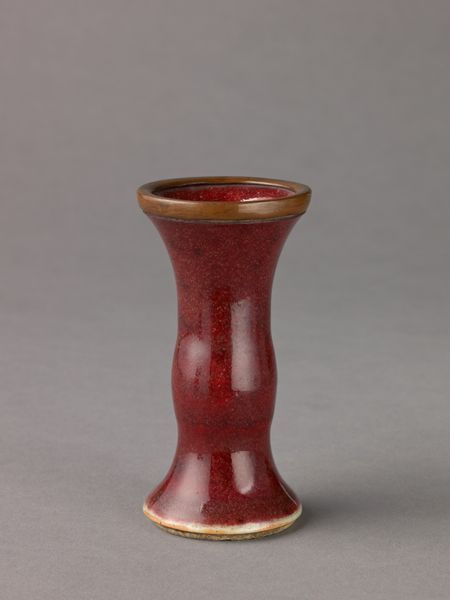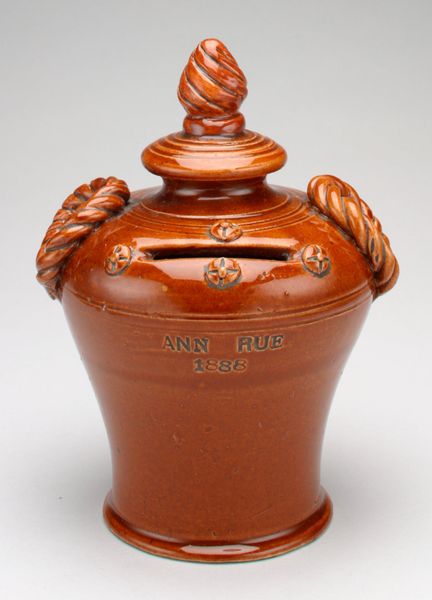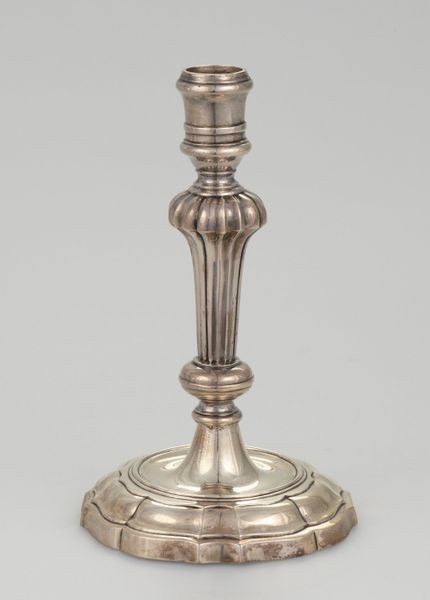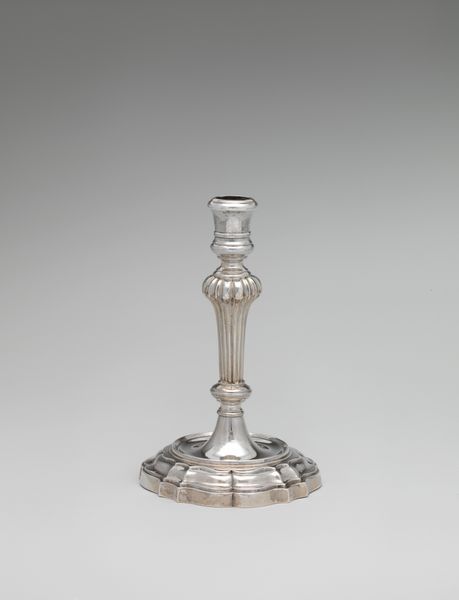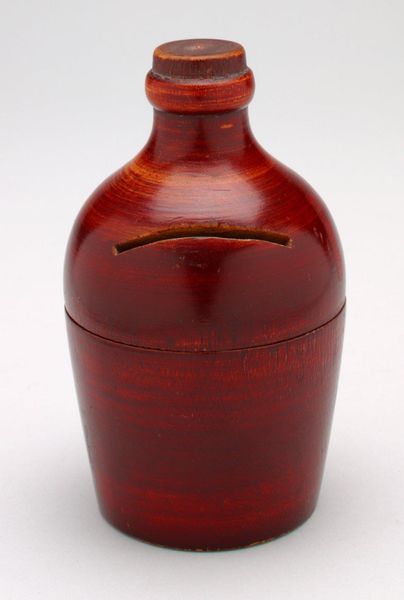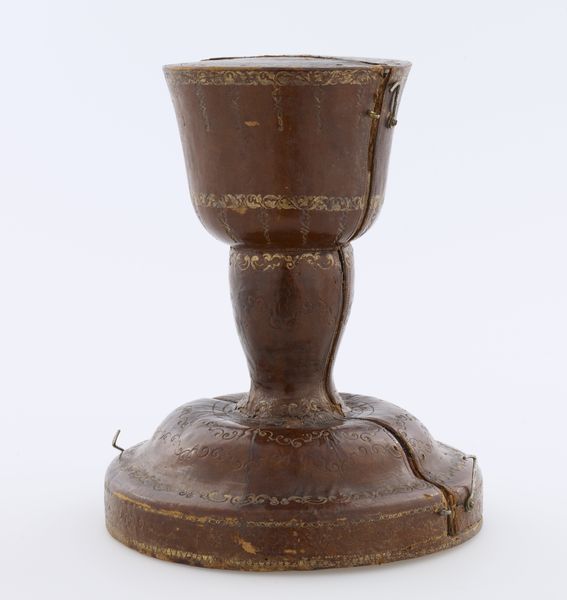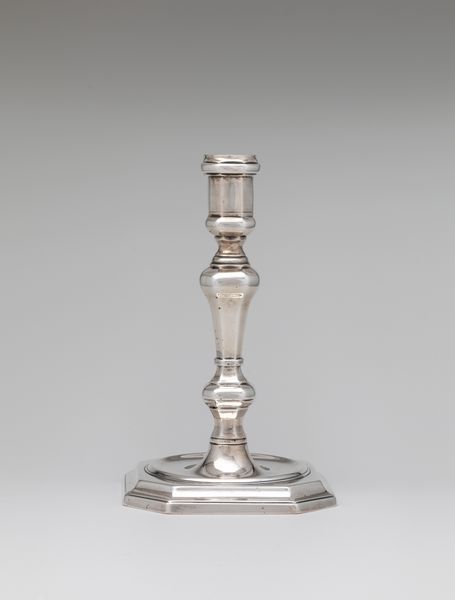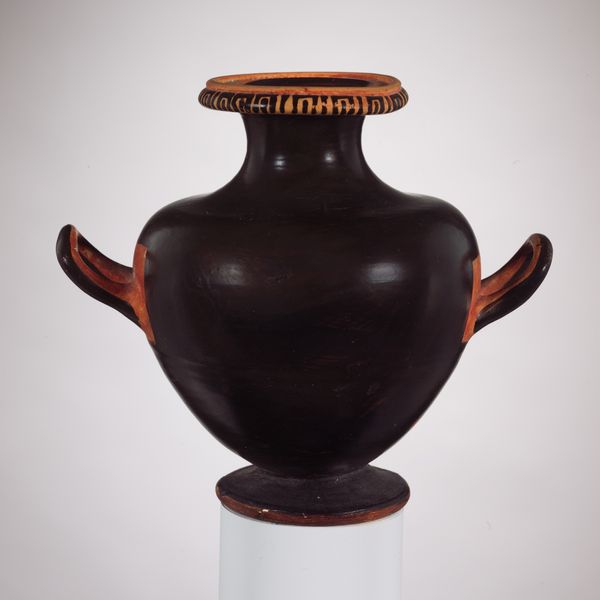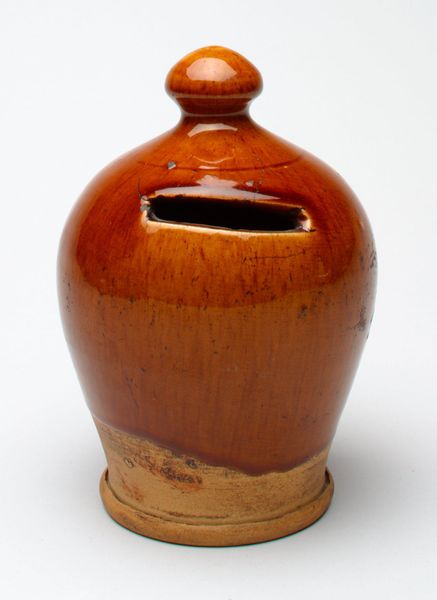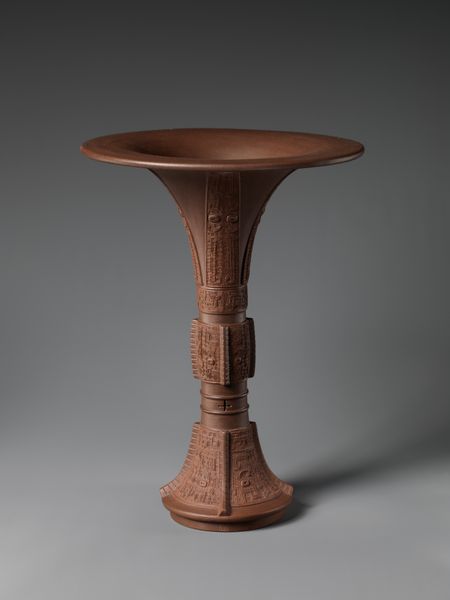
ceramic, earthenware
#
ceramic
#
earthenware
Dimensions: 9 3/8 x 4 3/16 x 4 3/16 in. (23.8 x 10.6 x 10.6 cm)
Copyright: Public Domain
This covered goblet was created by Johann Jacob Irminger sometime in the late 17th or early 18th century. It is made of turned wood and silver, and lacquered in a rich red. Woodturning has a long history, requiring both physical strength and precision. Shaping wood on a lathe, the turner coaxes out these symmetrical forms. Lacquering adds a layer of both protection and visual appeal, a technique perfected over centuries, particularly in Asian cultures. Irminger’s choice of materials speaks volumes. Wood, while less precious than metal or glass, is elevated here through the skilled application of craft. The silver accents add a touch of luxury, but the overall effect is one of understated elegance. The goblet's form is both functional and symbolic, referencing the traditional shapes of European metalwork. It is a testament to the enduring appeal of handcrafted objects in an age of increasing industrialization. The goblet is a reminder that even everyday materials can be transformed into objects of beauty and cultural significance.
Comments
minneapolisinstituteofart almost 2 years ago
⋮
In his quest for the manufacture of white porcelain, Johann Friedrich Böttger (1682-1719), the director of the Meissen factories near Dresden, searched other high fired, semi-vitreous wares, including finely-grained red Chinese stoneware. This clay body, which was known as Yixing ware, was produced since the sixteenth century at potteries located west of Shanghai. At the Meissen factories, this highly refined red stoneware was turned and polished by glass engravers who were brought to the workshops in 1708. This ware was only made from 1708 until about 1719, the year of Böttger's death.
Join the conversation
Join millions of artists and users on Artera today and experience the ultimate creative platform.

